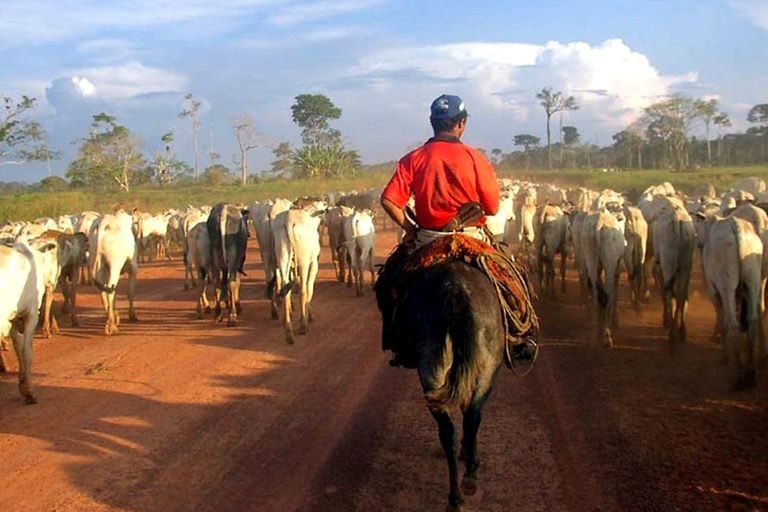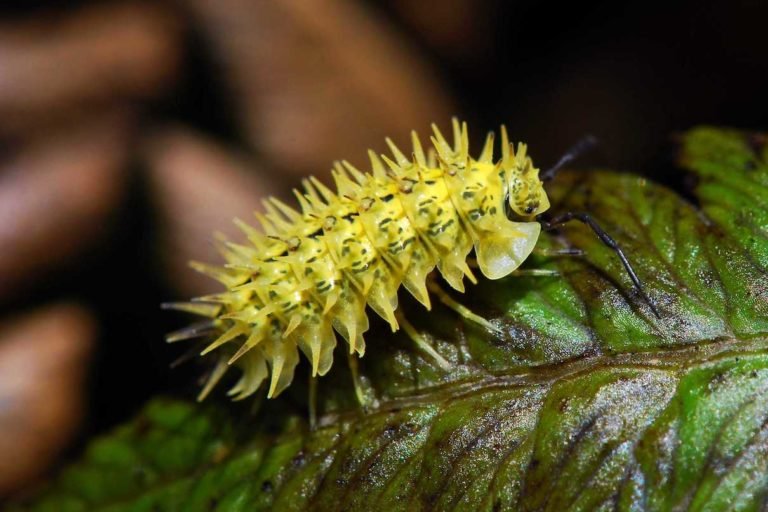- Satellite imagery of the Amazon can now distinguish for the first time between different factors contributing to forest loss.
- The satellite readings show that approximately 1.1 million hectares (2.7 million acres) were deforested in the Brazilian Amazon last year, the highest since 2017.
- In the Amazonian regions of Peru and Colombia, there was significant deforestation, but these were down from previous years.
A new analysis of satellite data of the Amazon published in late May provides the most detailed analysis yet of year-to-year deforestation in the region, revealing exactly where and why the rainforest is being cleared across Brazil, Bolivia, Peru and Colombia.
The report from NGO Amazon Conservation looked at satellite data from the University of Maryland, which is visualized on World Resource Institute’s Global Forest Watch platform. A recent update to the data set allowed it, for the first time, to be able to distinguish between different factors contributing to forest loss in the Amazon — something previous algorithms were unable to do. The report is part of Amazon Conservation’s Monitoring of the Andean Amazon Project (MAAP).
Most importantly, the satellite data can now tell the difference between forest fires and other forms of forest loss. It’s an important detail for conservationists trying to figure out where the rainforest is being hit the hardest.
Forest fires aren’t always a form of deforestation. Both contribute to what conservationists understand as “forest loss,” but in different ways. In many cases, fires only degrade forests, meaning trees are still standing and can even recover.
“These details allow us to better understand what is actually being deforested,” Matt Finer, senior research specialist at Amazon Conservation, told Mongabay. “What we’re getting is just a better understanding of the activity happening in the Amazon.” He added, “I really think this directs us to where to focus policies on deforestation across the Amazon.”
Previously, the satellite data compiled the three main factors contributing to forest loss: direct human-caused deforestation, fires, and “natural” forest loss from events like landslides and meandering rivers. Being able to look at these factors separately provides more precise data on the Amazon.
For example, deforestation in the Brazilian Amazon appeared to spike in 2016 to more than 3 million hectares (7.4 million acres) — an eye-popping figure that looks like an anomaly on the annual deforestation chart. But the new version of the data reveals that much of that was actually forest loss from fires, and only around 1.5 million hectares (3.7 million acres) were lost to deforestation.
Similarly, since Brazilian President Jair Bolsonaro took office at the start of 2019, spikes in deforestation have led to international criticism of his environmental policies. And while there has been a rise in deforestation throughout his tenure, the new figures show that much of it was forest fires, as opposed to direct human-caused deforestation.
2021 deforestation results
Amazon Conservation’s report also includes the final data on Amazon deforestation from 2021, on the rise in many parts of the region.
Last year, approximately 1.1 million hectares (2.7 million acres) were deforested, the satellite readings show, the highest since 2017. This was the fourth year in a row that the Brazilian Amazon experienced a slight increase in deforestation.
Most of it was concentrated along major roads (most notably highways 163, 230, 319 and 364) through the states of Acre, Amazonas, Pará and Rondônia, according to the report. Roads tend to be good indicators of human-caused deforestation, since they allow for trucks and transport of infrastructure for logging and agriculture.

“In Brazil’s agricultural sector, we have a lot of people with a vision of development that is really a mistake,” said Suely Araújo, public policy adviser for the Climate Observatory, a coalition of civil society groups in Brazil. “They see environmental regulations as barriers to be overcome and not regulations that increase sustainability efforts.”
Fires in the Brazilian Amazon, meanwhile, mostly occurred farther southeast, in the state of Mato Grosso, suggesting the area is suffering from the burning of already-deforested land as well as from deforestation.
This area and many others in Brazil experienced what the report calls a “one-two combination,” with deforestation being followed by fires that are set to prepare the land for agriculture and livestock pasture.
“Cattle producers act without any care for the environment,” Araújo said. “They use the cattle to occupy the land. The land is really more important than the cattle. When it comes to forest loss, it’s a recipe for destruction.”
Bolivia suffered the second-worst deforestation of any Amazon country in the region last year, with 161,000 hectares (397,000 acres). It was the third-highest amount of deforestation ever recorded for the country, according to the report. Most of it was the result of agriculture in the department of Santa Cruz.
In the Peruvian and Colombian sections of the Amazon, deforestation was significant, but at a lower rate than in previous years. Peru lost 132,400 hectares (327,000 acres) of forest, driven mainly by expanding Mennonite colonies, while Colombia lost 98,000 hectares (242,000 acres), as a result of land grabbing, roads, and cattle ranching.
“We’re really near a tipping point,” Araújo said of the fate of the rainforest. “There’s a lot of science showing this. The destruction of the Amazon will be dangerous for the continent and the whole world.”
Banner image: The Brazilian Amazon, near Puerto Maldonado. Photo courtesy of Ivan Mlinaric/Flickr.
FEEDBACK: Use this form to send a message to the author of this post. If you want to post a public comment, you can do that at the bottom of the page.
Editor’s note: Mongabay has a funding partnership with the World Resources Institute (WRI) via the Forest Trackers project, which leverages Global Forest Watch data to quickly identify concerning forest loss around the world and catalyze further investigation of these areas. Mongabay maintains complete editorial independence over the stories reported using this data, and WRI has no editorial input on Mongabay content.











